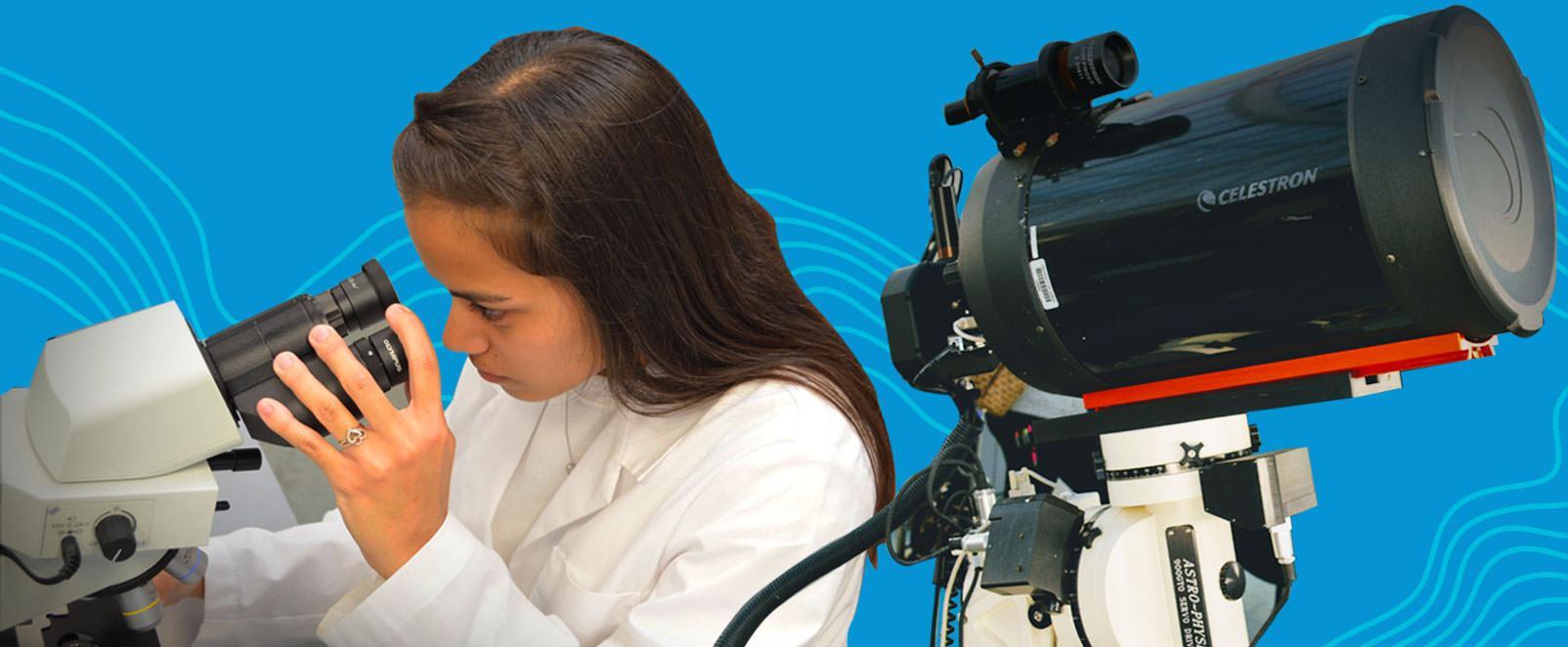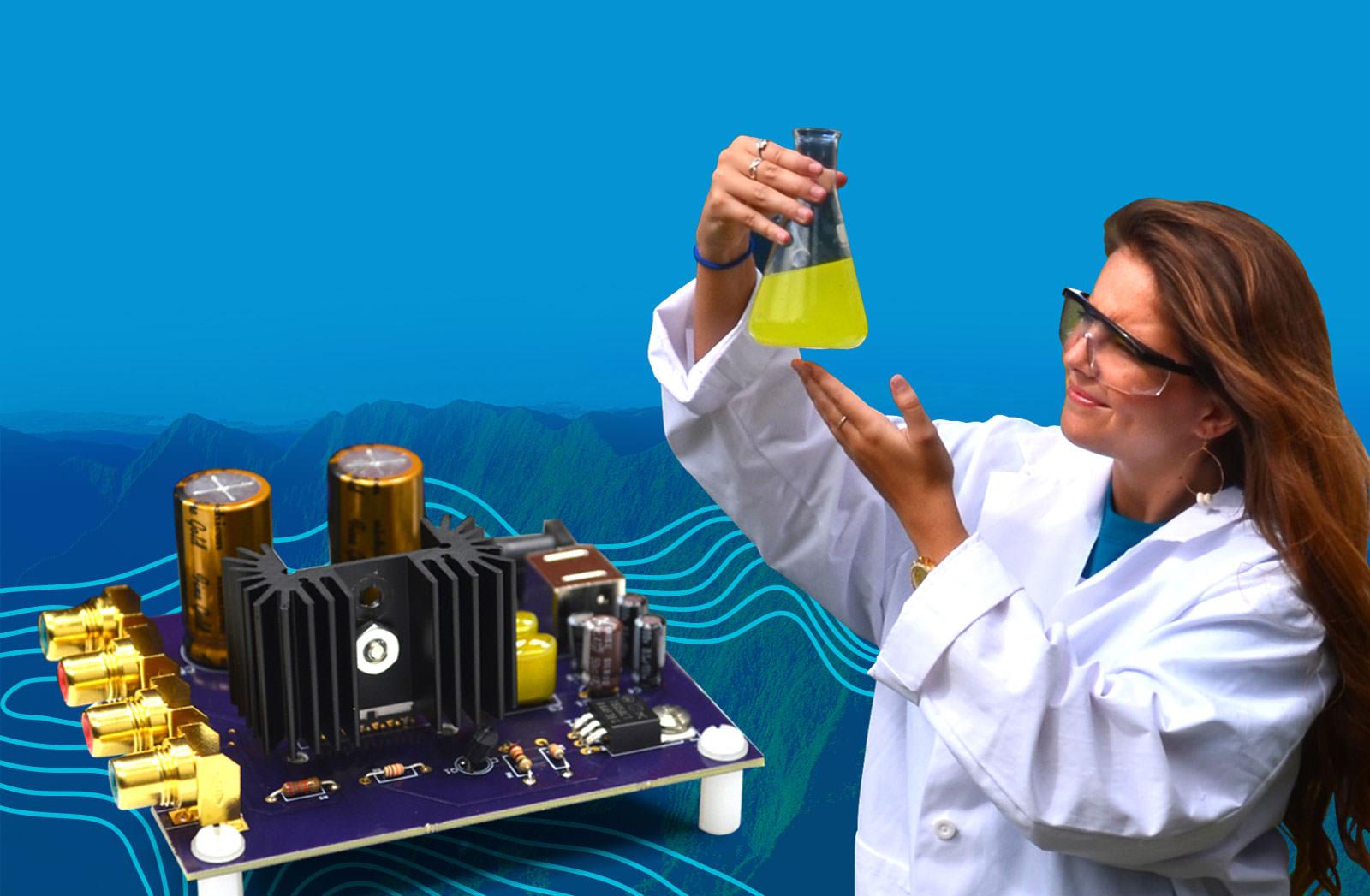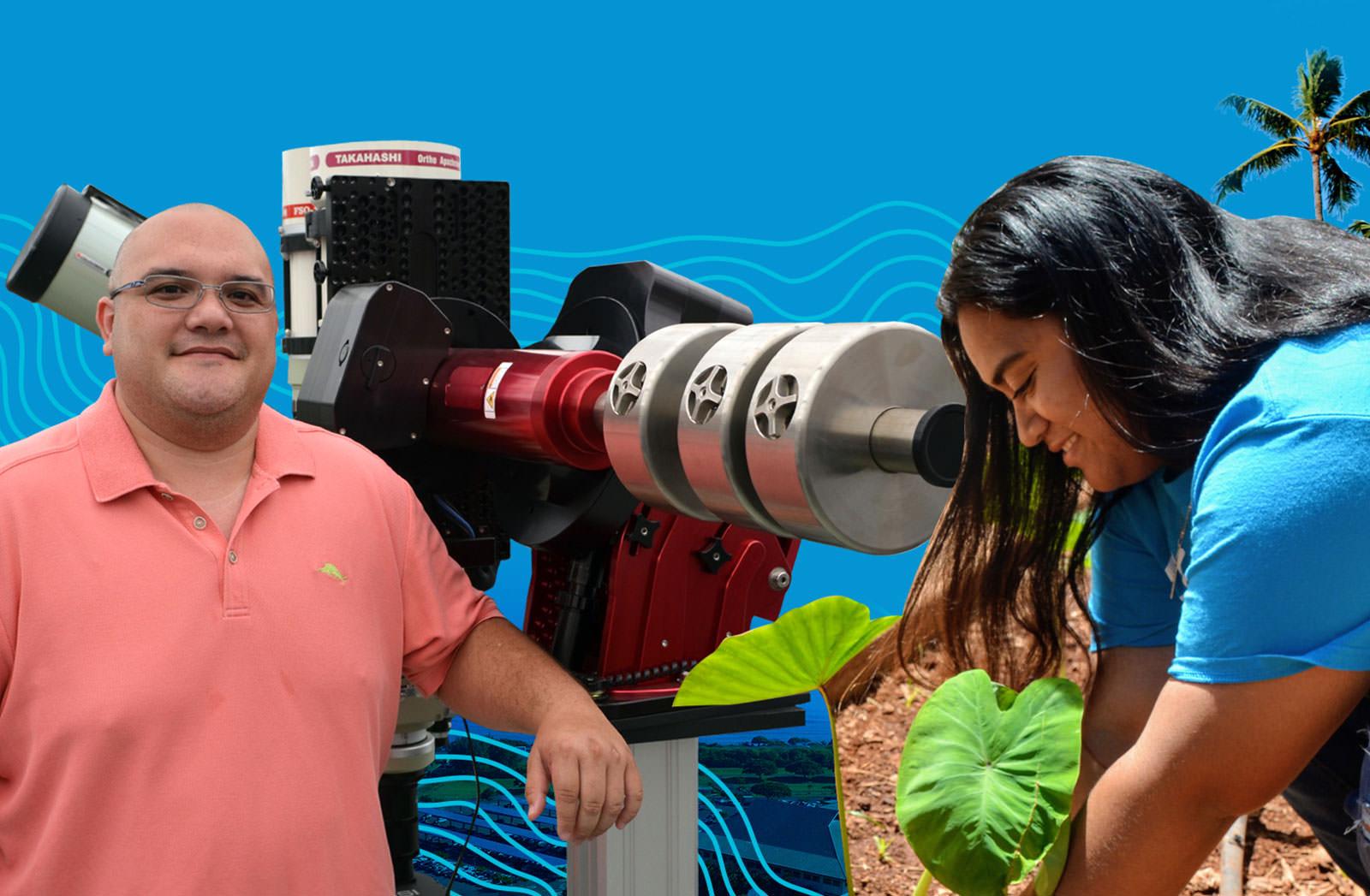NSF-UHMC Noyce Capacity-Building Summit
From March 17-18 and 24-25, 2021, more than 100 attendees gathered online to discuss one very important topic: the lack of STEM teachers in Hawai'i’s K-12 system. Although this problem is nothing new, the summit marked the first time in the state’s history that stakeholders from the Hawai'i State Department of Education (HIDOE), higher education, and government legislature convened specifically to address how they might work together to address the issue.
The Problem:
Ensuring every student has a qualified and effective teacher throughout their educational career is at the core of HIDOE's promise of equity and excellence in public education. Unfortunately, our school system — and many, many others across the country — is not fulfilling this promise in the STEM (science, technology, engineering, and math) disciplines.
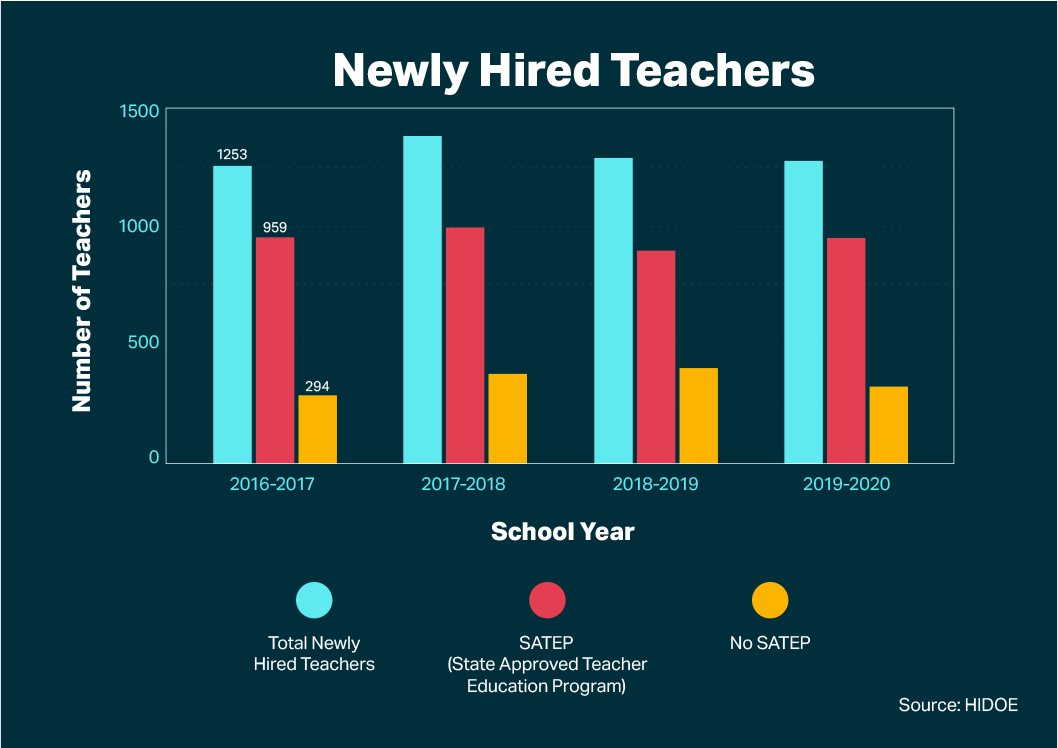
PILLAR 2
Recruitment
- Better communicate the benefits of teaching in Hawai'i
- Teaching in Hawai'i is a viable profession.
- There are already several pathways to becoming a teacher.
- Financial incentives exist, particularly in high-need areas.
- Hawai'i offers greater job security for teachers.
- Teaching in Hawai'i offers benefits that go far beyond financial compensation.
- Leverage existing programs to increase awareness
- Grown Our Own (GOO)
- Hawai'i's Teacher Academies
- Leeward Community College's Teacher Education Program
PILLAR 3
Retention
- Expand mentorship opportunities.
- Provide differential pay for STEM and other hard-to-fill teaching positions.
- Assist in out-of-pocket expenses.
- Assist with basic living expenses.
- Promote existing shortened probationary periods.
- Promote existing professional development opportunities.
- Promote Hawai'i’s culture and unique teaching opportunities.
- Develop stable and sustainable resources.
PILLAR 1
Certification & Licensure
To become a teacher in Hawai'i, you must first be certified and licensed. The current process was developed with the traditional pathway in mind: a student receives the requisite college degree(s) in education and undergoes classroom training. The linear nature of the process precludes other potential candidates, such as those looking to change careers.
For those individuals, the path to becoming a teacher is more arduous, as the qualifications require that they go back to school to obtain the necessary courses and/or degrees — which tends to be a deterrent due to the cost and time involved. Because of this, Hawai'i is missing out on the opportunity to recruit individuals who are otherwise highly qualified to teach.
There are several opportunities to increase the pool of STEM teaching candidates:

Expand the STEM licensure process.
The one that currently exists for out-of-state candidates needs to be expanded to include in-state candidates.

Create alternative qualifications for certification and licensure.
These alternatives should regard an individual’s real-world skills and experience as equal to classroom knowledge. This would allow more prospective teachers to fill the numerous empty positions that Hawai'i is currently experiencing, while maintaining our high teaching standards.

Participate in interstate reciprocity.
Broaden the teacher candidate pool to ensure that Hawai'i has reciprocity laws that accept teaching licenses from other states. Not only would this make Hawai'i more appealing to teachers on the mainland, but it would also allow individuals who move often, such as military spouses, to consider teaching as a career that will follow them wherever they relocate.
PILLAR 2
Recruitment
In Hawai'i, recruitment of out-of-state teachers has risen since 2015, highlighting the need to recruit from within. But even among Hawai'i residents, many of the benefits of teaching are unknown — or are altogether inaccurate. That makes awareness a key factor in recruitment, particularly on the following points:

Teaching in Hawai'i is a viable profession.
Even within the state, awareness of teaching as a viable career is low. Those who are aware that teaching is a career opportunity may not be aware of the benefits — and instead may only be aware of the negative connotations associated with the position (e.g., low pay).

There are already several pathways to becoming a teacher.
You don’t need to go to Oahu or the mainland to get your degree in education. Several colleges already have programs in place that allow students to get their degrees either online or through an institution on their island. For example, the University of Hawai'i Maui College has a program that allows students to remain on Maui while working towards a teaching degree from UH Manoa. Such programs need to be better promoted so that students are aware of them as early as the first year of high school. Many more pathways are in the works.

Financial incentives exist, particularly in high-need areas.
In hard-to-reach communities such as Lana’i, Moloka’i, Hana, and even the west side of Oahu, teachers can receive additional incentive pay for teaching in these locations. That differential can make the difference between recruiting/retaining and attrition. For example, a one-time relocation bonus of $3,000 is offered for accepting a position at a hard-to-staff school; $2,000 for relocating to all other schools in the Hawai'i system. There are also opportunities to increase salary by earning more college credits.

Hawai'i offers greater job security for teachers.
Hawai'i is one of the few states that still offers tenure, meaning increased job security for those who qualify.

Teaching in Hawai'i offers benefits that go far beyond financial compensation.
Aside from the fulfillment that comes from teaching in general, teachers in Hawai'i hold a place of esteem within the ohana, our community. School culture also tends to be more supportive than that on the mainland.
Grown Our Own (GOO)
Already in place, this program provides a stipend for a post-baccalaureate or master's program so potential teachers can receive teaching certification. This has been especially helpful in recruiting individuals with backgrounds in high-need areas, such as STEM.
Hawai'i’s Teacher Academies
We can plant the seed early at existing teacher academies (9-12 grade), which are already in many high schools across the state. These programs offer high school students the opportunity to gain hands-on experience with teaching as a career. One example of such a teacher academy is the APPS Teacher Education Pathway at Waipahu High School.
Leeward Community College’s Teacher Education Program
This initiative allows sophomores to serve as peer mentors for their classmates. The student-run Future Teachers Club seeks to unite like-minded individuals with an interest in teaching and to provide members with field experience, to fulfill that requirement of their associate in science in teaching degree.
By expanding and leveraging existing programs, we can increase awareness — through communication that is clearly worded and easily accessible — of all that teaching in Hawai'i has to offer to attract more qualified teaching candidates.
PILLAR 3
Retention
One of the most common misconceptions is that the state of Hawai'i does not have enough people interested in teaching here. Nothing could be further from the truth. What we lack are the incentives to recruit and retain teachers.
In many ways, the problems associated with retaining good teachers are similar to those with recruitment. In both instances, simply increasing awareness of the benefits associated with a teaching career can go a long way.
Teachers can be incentivized to stay in numerous ways, some of which already exist but just need to be improved or even just communicated, as many of these opportunities are not well known even among existing teachers.

Expand mentorship opportunities.
Leverage existing successful programs in teacher mentorship and preparation, such as the Teacher Induction Program and our partnership with the New Teacher Center. Teachers go through many phases of development, particularly during their first two years, which are a time of socialization and enculturation, as well as period to build strong instructional practices. To ensure new teachers are set up for success, we provide high-quality support from a mentor who can help instill in them the confidence needed to lead a classroom. Studies show that new teachers benefit from these programs.

Provide differential pay for STEM and other hard-to-fill teaching positions.
Differentials currently range from $8,000-$10,000 for Hawai'ian immersion to $4,000-$10,000 for hard-to-staff locations. We have data to show that teachers are transferring into hard-to-staff positions, into special education, and fewer teachers are leaving those locations.

Assist in out-of-pocket expenses.
One study showed that 94% of teachers spend an average of $450 to $500 of their own money annually on school supplies — and they do this while making only 80 cents on the dollar compared to professionals with the same credentials.

Assist with basic living expenses.
Securing sustainable resources to provide incentives and resources to assist with common issues such as pay and housing. In 2018 and 2019, Hawai'i was ranked as having the lowest teacher salary in the nation, especially when adjusted for the cost of living. Individuals with a bachelor's degree receive a starting pay of $49,000; those with a master’s receive $53,000. Over decades, teacher salaries have consistently failed to keep up with inflation and the cost of living.

Promote existing shortened probationary periods.
Most teachers new to the department or the profession must serve three years of probation, whereas a National Board teacher need serve only one year.

Promote existing professional development opportunities.
Many are low- or no-cost for our teachers and provide individuals with a way to be reclassified into a higher salary bracket. One example is that by getting a National Board Certification, a teacher can receive an annual $5,000 salary increase. Teaching is probably the only profession in the state that currently has the potential for salary increases solely through their own hard work, i.e., not through changing jobs or receiving promotions.

Promote Hawai'i’s culture and unique teaching opportunities.
No other state has the diversity that Hawai'i enjoys, and its nurturing culture places a high value on teachers, perhaps moreso than anywhere else in the country, which in turn creates solid and supportive school environments.

Develop stable and sustainable resources.
This will help provide and maintain incentives and programs, including assistance with pay and housing.
Sign up for TSIH updates
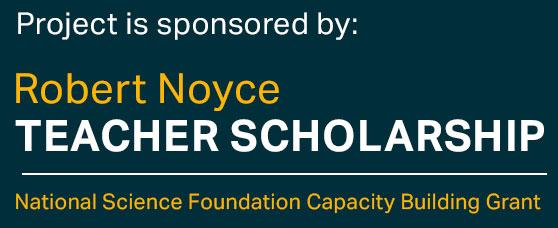

Contact
Debra A. Nakama, PhD
Vice Chancellor of Student Affairs
Email: [email protected]
Phone: (808) 984-3515

